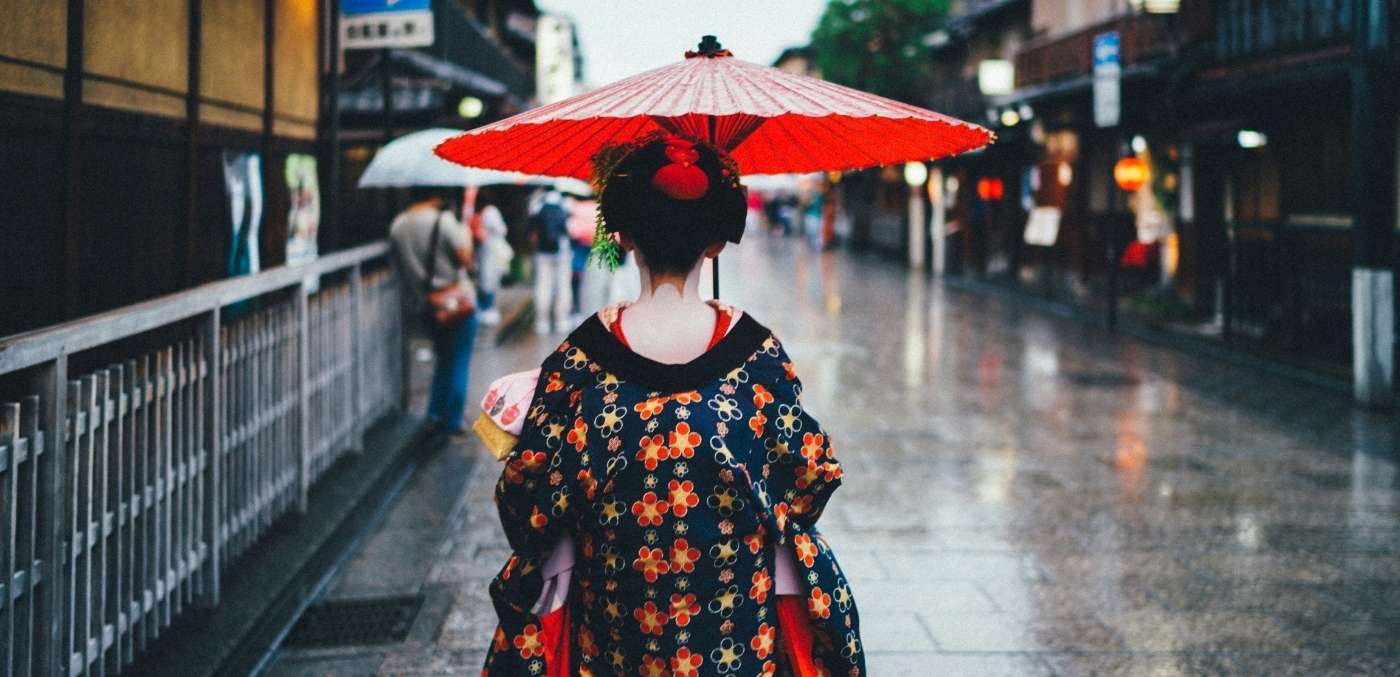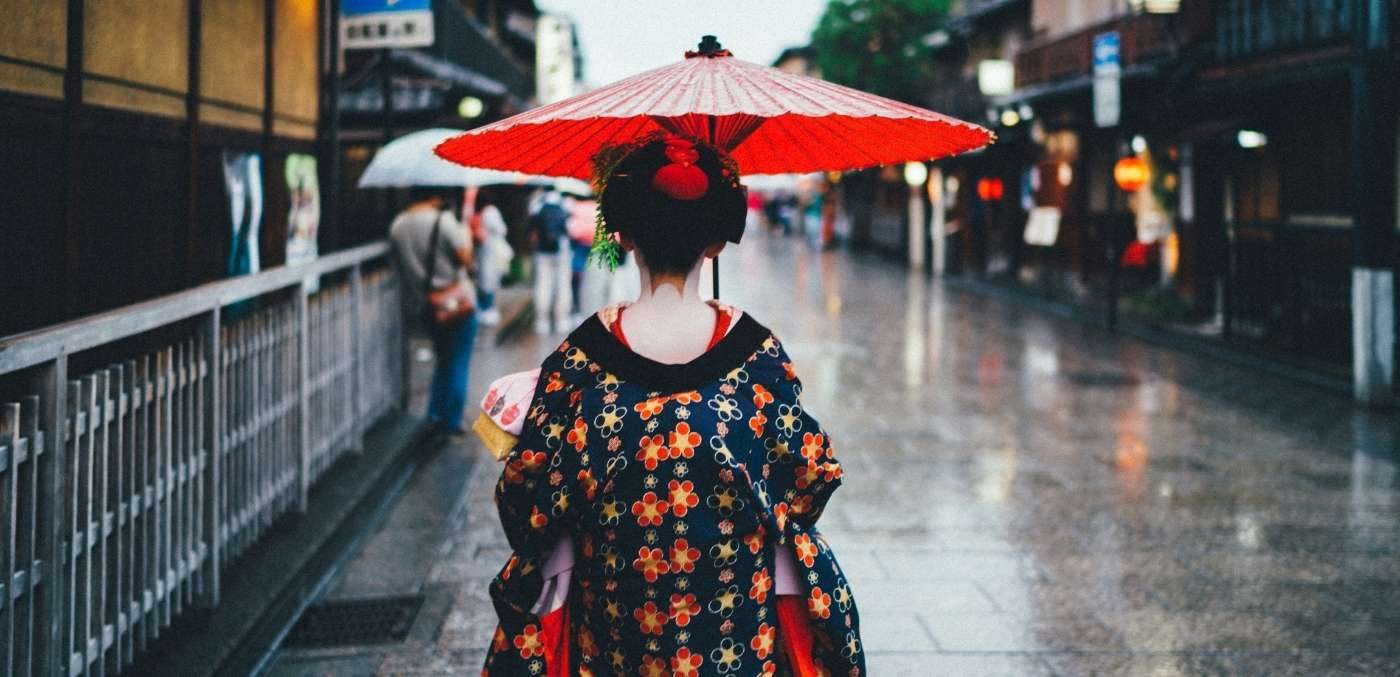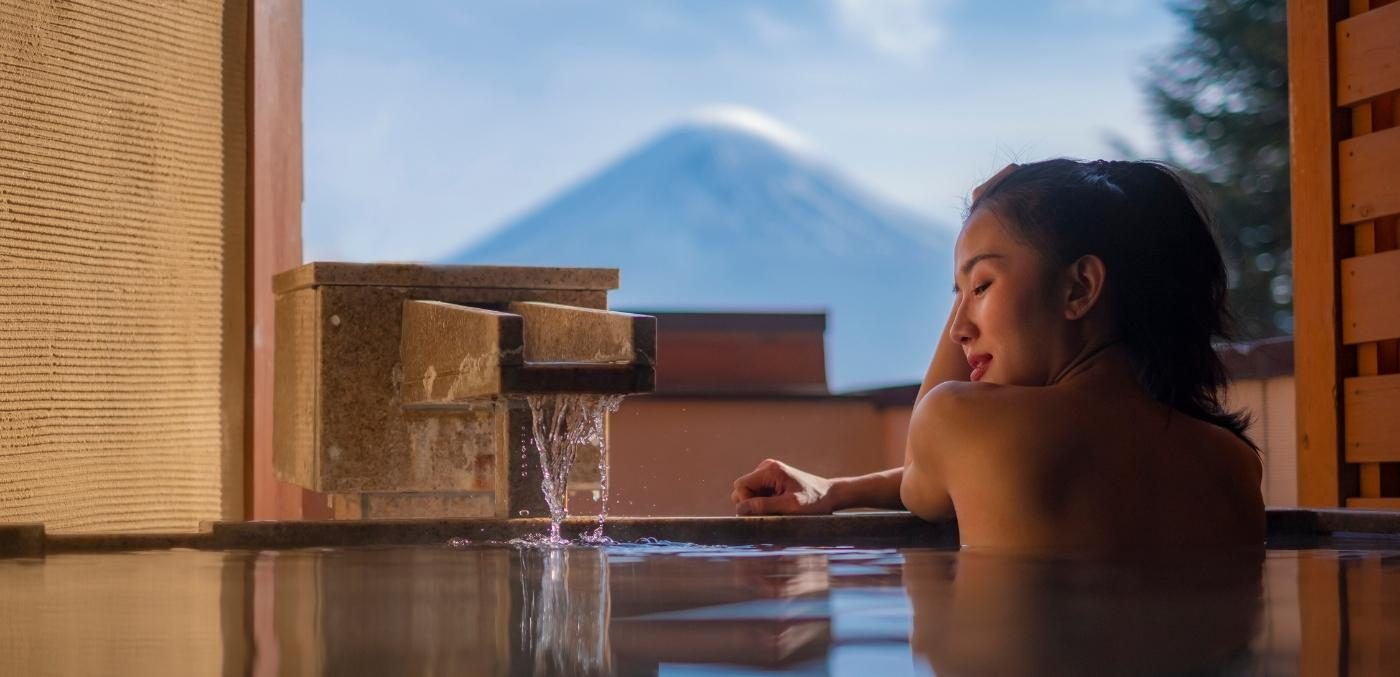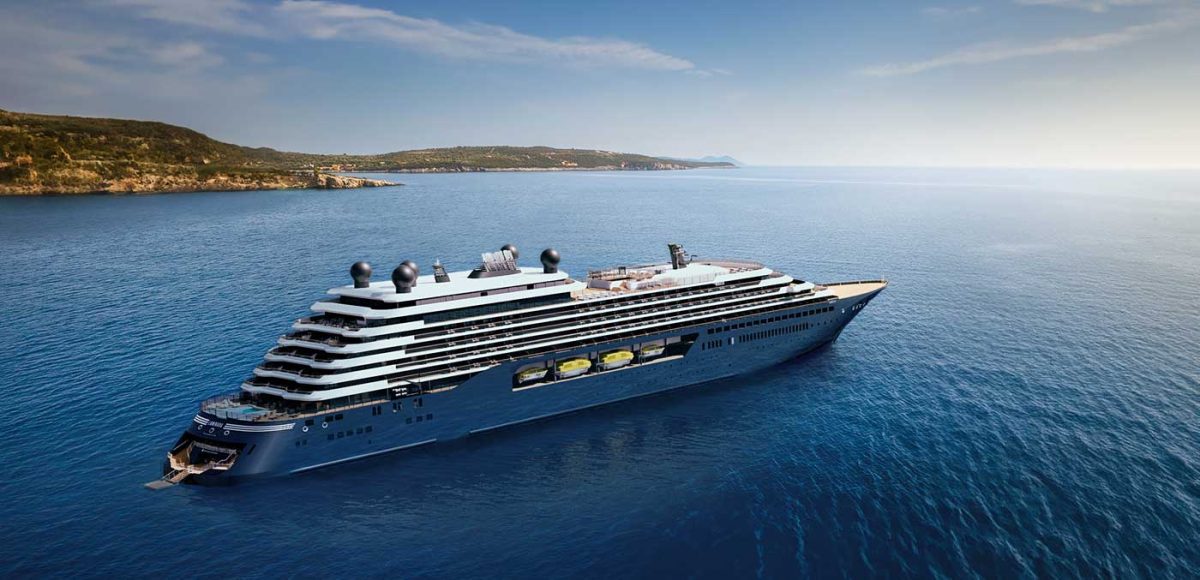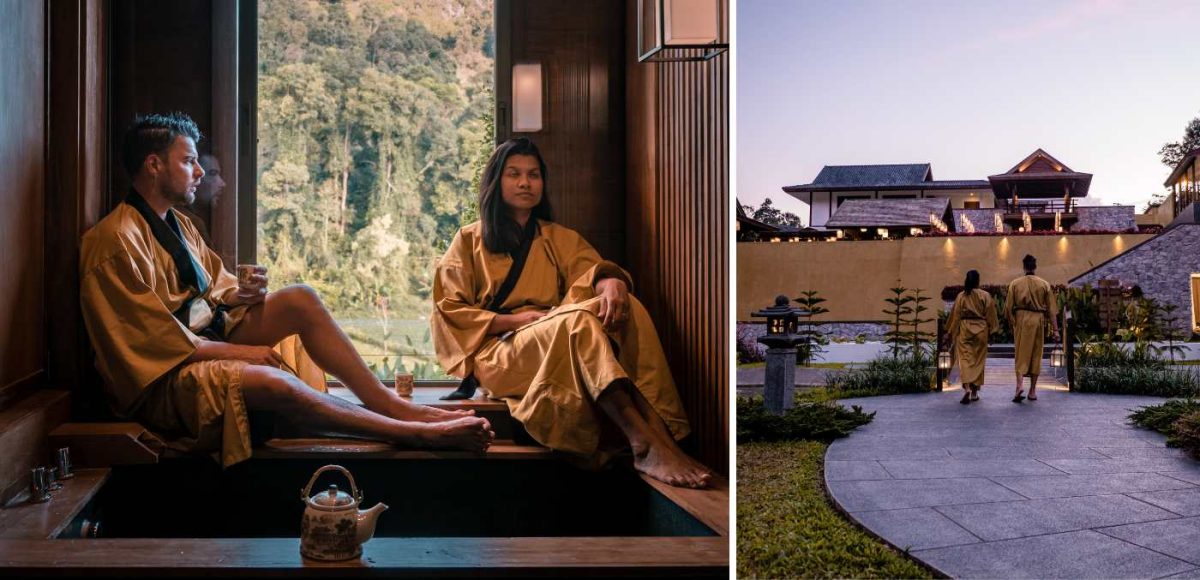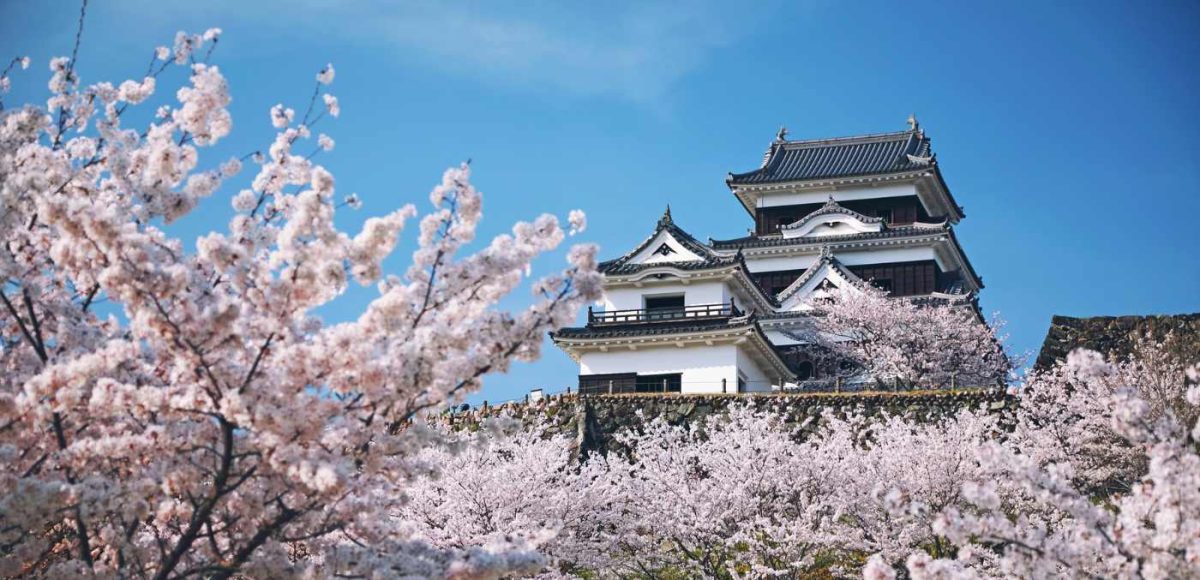From thumping metropolises and sub-tropical coastlines to the snow-dusted peaks of the alps, these are the best places to visit in Japan. By Laura Barry
As I finally extract myself from the heaving throng of people on Nakamise-dori, my ears are assaulted by the rattling thrash of fortune-telling omikuji-sen. Sensō-ji towers before me, its giant lantern swinging above a haze of burning incense. Tourists dressed in rented kimono – complete with hair pins and geta sandals – pose for pictures in front of the five-storied pagoda. It’s a tourist trap for sure, but venture beyond the Buddhist temple and you’ll discover izakaya-lined streets and locals going about their everyday business.
The Land of the Rising Sun is a country built upon balance. In Tokyo, the wards of Shibuya and Shinjuku pulsate to a relentless urban rhythm, while just an hour away lies a leafy escape set upon the crests of Mount Takao. Shinto shrines are treasured and stand testament to Japan’s commitment to tradition, yet technology, gaming and lightning-fast trains suggest a society firmly focused on the future. Beyond Tokyo, Osaka and Kyoto is a world away from our own, a cornucopia of culinary treasures, craftsmanship and cultural riches. Read on for Signature’s curated collection of the best places to visit in Japan.
How to get to Japan
Floating to the east of China in the Pacific Ocean, Japan is an archipelago comprised of thousands of islands; Honshu, Hokkaido, Kyushu and Shikoku are the largest. A direct flight from Australia to Japan takes less than 11 hours, and passengers can fly in business class when traveling with Japan Airlines, All Nippon Airways or Qantas.
Japan travel facts
Currency: Japanese yen ¥
Language: Japanese
Religion: Shinto and Buddhism
Capital: Tokyo
Emergency numbers: fire, ambulance and rescue: 119 Police: 110
Time zone: Japan Standard Time (GMT+9) Canberra, Australia is one hour ahead of Tokyo, Japan
Visa: Australian travellers entering Japan for tourism, business or transit for a duration of less than 90 days do not require a visa to enter Japan.
Peak season: spring (from March to May) and autumn (from September to November)
Low season: winter (from December to February)
Cherry blossom season: late March to early April
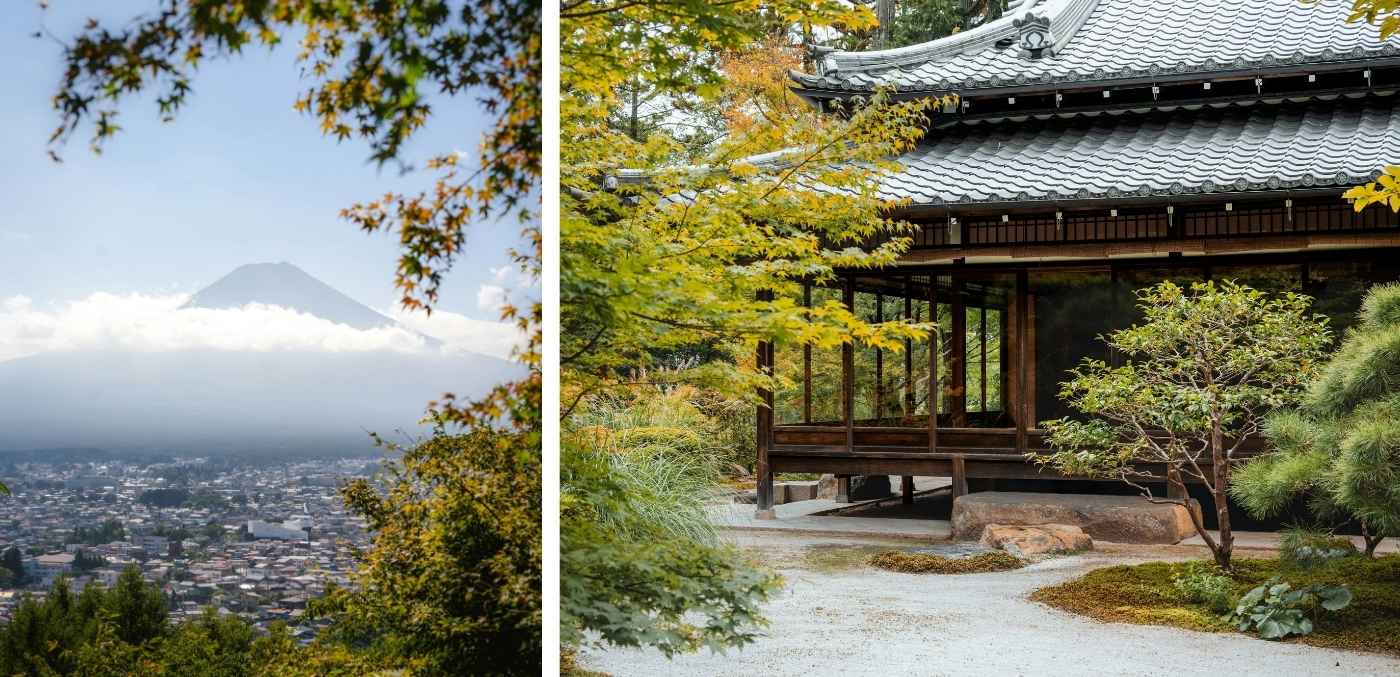
Understanding Japan’s islands, regions and prefectures
While the best places to visit in Japan are spread across the archipelago, visitors typically find themselves staying on one of the four main islands: Honshū, Hokkaido, Kyushu and Shikoku. Tokyo, Osaka and Kyoto are all found on Honshu. Japan has eight regions: Hokkaido, Tohoku, Kanto, Chubu, Kinki, Chugoku, Shikoku, and Kyushu-Okinawa. Each region is divided into prefectures, and there are 47 prefectures across the country.
Kantō
- Seven prefectures: Tokyo Metropolis, Kanagawa, Chiba, Saitama, Gunma, Tochigi and Ibaraki
- Destinations such as Tokyo, Yokohama, Kamakura, Nikkō and Tochigi
Hokkaido
- One prefecture: Hokkaido
- Destinations such as Hokkaido, Niseko, Rusutsu, Furano and Sapporo
Tohoku
- Six prefectures: Aomori, Akita, Iwate, Yamagata, Miyagi and Fukushima
- Destinations such as Sendai, Yamagata, Miyagi, Iwate, Akita, Fukushima and Aomori
Chūbu
- Nine prefectures: Aichi, Fukui, Gifu, Ishikawa, Nagano, Niigata, Shizuoka, Toyama and Yamanashi
- Destinations such as Mount Fuji, Aichi, Fukui, Gifu, Kanazawa, Nagano and Shizuoka
Kinki (Kansai)
- Seven prefectures: Kyoto, Nara, Shiga, Wakayama, Mie, Osaka and Hyogo
- Destinations such as Kyoto, Osaka, Kobe, Koka, Mie, Ueno, Kinosaki Onsen
Chūgoku
- Five prefectures: Hiroshima, Yamaguchi, Shimane, Tottori and Okayama
- Destinations such as Hiroshima, Seto Inland Sea, Miyajima, Onomichi, Tottori and Shimane
Shikoku
- Four prefectures: Kagawa, Ehime, Kochi and Tokushima
- Destinations such as Kagawa, Kochi, Matsuyama, Dogo Onsen, Tokushima, Ozu, Naoshima, Shodoshima
Kyushu-Okinawa
- Eight prefectures: Fukuoka, Saga, Nagasaki, Kumamoto, Ōita, Miyazaki, Kagoshima and Okinawa
- Destinations such as Fukuoka, Mt. Aso, Beppu, Yufuin, Okinawa, Kyushu

Tokyo
The only way to truly grasp the scale of Tokyo is to see it from above. From my perch 229 metres high at Shibuya Sky, the megacity stretches endlessly towards the horizon in every direction. Tokyo Tower and Skytree punctuate the skyline, while hundreds of people dash across the infamous scramble crossing below. The capital is the quintessential launch point for any journey through the best places to visit in Japan. From humble beginnings as a fishing village hundreds of years ago to being crowned the capital in 1869, Tokyo is now home to more Michelin-starred restaurants than any other city in the world.
Shopping
Sartorial jet setters should spend a day strolling Chuo-dori in Ginza and its fantastic array of international labels, from Chanel and Dior to Issey Miyake and Maison Margiela. Ginza Six is the department store of choice for the style cognoscenti, while Omotesando Hills is a premium indoor mall with boutiques spanning Harry Winston to Yohji Yamamoto’s Y3. Drop by the flagship Itoya store in Ginza for a next-level immersion into premium stationery. Should you be in the market for rare and collectible gaming, Akihabara is the place to be.
Signature experiences
Those seeking cultural immersion should make a beeline for Asakusa to take in the sensorial overload of Kaminarimon Gate, Sensoji and Nakamise-dori. Have your fortune told by a omikuji-sen, then sample daifuku and mitarashi dango from a local vendor. Afterwards, explore the surrounding streets and refuel at a local izakaya before journeying onwards. Looking for a quieter temple experience? Visit the Mausoleum of Confucius, Yushima Seido. It’s Tokyo’s only black temple and is almost always empty. Other areas of note include Shibuya Scramble Crossing, Cat Street, Meiji Jingu, Tsukiji Outer Market and Shinjuku Gyoen National Garden.
Signature Selects: Bed down at The Okura Tokyo, an intimate five-star hotel in Minato where timeless Japanese traditions are carefully integrated with exquisite modern design. Guests can take part in a tranquil tea ceremony, enjoy impeccably prepared kappo counter meals and sip signature espresso martinis at the Orchid Bar. For skyline teppanyaki featuring three different types of wagyu (the hotel has its own ranch in Shimane Prefecture raising high-pedigree Tajima cows), head to Sazanka on the 41st floor. Our team can attest it is expectation-defying.
Day trips
Mount Fuji: A little more than two hours away by car, visit Chureito Pagoda for iconic views of Mount Fuji. Ride the Mount Fuji Panoramic Ropeway to take in views over Lake Kawaguchiko, visit the cascades of Shiraito Falls or overnight in the hot spring onsen town of Hakone.
Kamakura: The coastal town of Kamakura is sometimes called the ‘Kyoto of Eastern Japan’ for its abundance of temples and shrines. The Great Buddha, Hasedera Temple, Hokokuji Temple and Hachimangu Shrine draw the largest crowds, though there are plenty more to see. Visit Komachi-dori street to sample Japanese sweets and savoury treats. Kamakura can be paired with a visit to the island of Enoshima.
Nikkō: Nestled in the forested mountains of Tochigi Prefecture, Nikkō enchants visitors with its UNESCO-listed Tōshō-gū Shrine, serene Kegon Falls and the peaceful Lake Chūzenji. Wander ancient cedar-lined paths, cross the famed red bridge or spend a day soaking in a traditional onsen.
Hakone: Stay at a traditional ryokan in Hakone, complete with private open-air onsen baths and multi-course kaiseki dining. Enhance the experience with a cruise on Lake Ashi, a scenic helicopter ride over Mount Fuji, or a private art tour at the acclaimed Hakone Open-Air Museum.
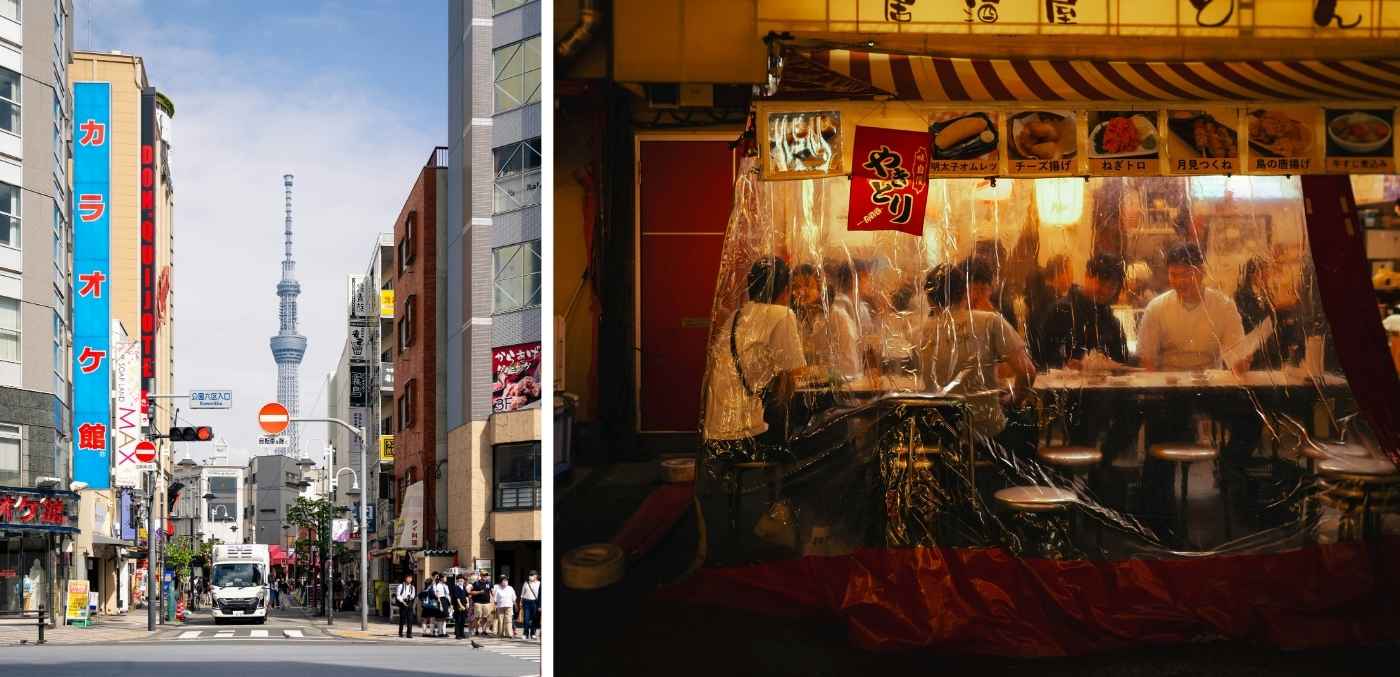
Kyoto
Quieter than Tokyo yet far more charming, the past and present converge harmoniously in Kyoto. Here, geisha and maiko traditions are preserved alongside historic machiyas and UNESCO World Heritage-listed sites, each offering insight into the prefecture’s former life as the imperial capital of Japan. Typical tourist itineraries comprise visits to Higashiyama, Kiyomizu-dera, Arashiyama Bamboo Forest and Fushimi Inari Taisha. However, travellers can enjoy significantly less crowds and quieter surrounds by venturing beyond the highlights.
The Nanzenji Temple complex is everything I imagine old world Japan to be; 16th century gargantuan structures, serene temples, shrines and enchanting gardens are hidden within this leafy escape, which is connected to the picturesque Philosopher’s Path that concludes at Ginkakuji temple. At Arashiyama, opt for a private river boat cruise, and forgo the crowded paths of the bamboo forest for a visit to Adashino Nenbutsuji Temple where you’ll find a smaller – but much less visited – bamboo garden.
Signature experiences
One of the best places to visit in Japan to undergo a cultural education is Kyoto. Attend a traditional tea ceremony in a historic home with Maikoya, or while taking in garden views at Sakagushian. Alternatively, attend a geisha performance at the traditional Ochaya Man teahouse or peruse generations-old ceramics stores such as Mitsuhashitoho.
For a memorable introduction to Japanese garden culture, don a traditional happi coat and learn the philosophy of Zen garden raking from a knowledge-rich landscaping artisan through JFE Tours – all taking place in a meditative garden setting bordered by maple and hinoki trees. Then head to Menbaka Fire Ramen for a theatrical dining experience that will set both your heart and tastebuds aflame. Travellers keen to delve deeper into Japan’s culinary heritage should make a beeline to Samurai Gyoza Factory, where guests can learn to make their own gyoza in a welcoming environment.
Three-star Michelin dining
Gourmands can tickle their tastebuds with five three-Michelin-star restaurants hidden within the city. Sample white miso zoni and tilefish baked in sake at Isshoden Nakamura; enjoy a ryotei experience in the gardens of Hyotei; a charcoal brazier takes centre stage at Gion Sasaki; eat your way through a chakaiseki service at Mizai; or savour contemporary local fare at Kikuni Honten.
Insider tip
Travellers planning to visit Kyoto in the warmer months may like to coincide their stay with the annual Gion Festival, a month-long festival held in July dating back to 869. One of Japan’s most anticipated cultural celebrations, the festival brings together thousands of visitors from across the country and buzzes with unparalleled energy as colossal floats parade down the streets to ward off evil spirits. To dodge the crowds, book premium seating (offering unobstructed views of the parade during the main procession on 17 July) through Kyoto Travel.
Signature Selects: Perched on a forested hill in Kyoto’s historic Higashiyama Ward, Banyan Tree Higashiyama Kyoto is a true sanctuary of calm. It lies just moments from the city’s main attractions yet feels entirely removed from the crowds. The hotel opened in August 2024 and has its own bamboo forest, a private onsen reserved for hotel guests and 52 elegant ryokan-style rooms that unite traditional Japanese ryokan elements with contemporary comfort (no hard futon mattresses to be found).
Day trips
Nara: Though Nara and its bowing deer are common tourist fodder, the sight of such interactions is something to behold – but don’t go to Nara Park. Take a walk in the woods towards Kasuga Taisha or Todai-ji, and you’ll find sika deer who are significantly more civilised than their park-dwelling brethren.
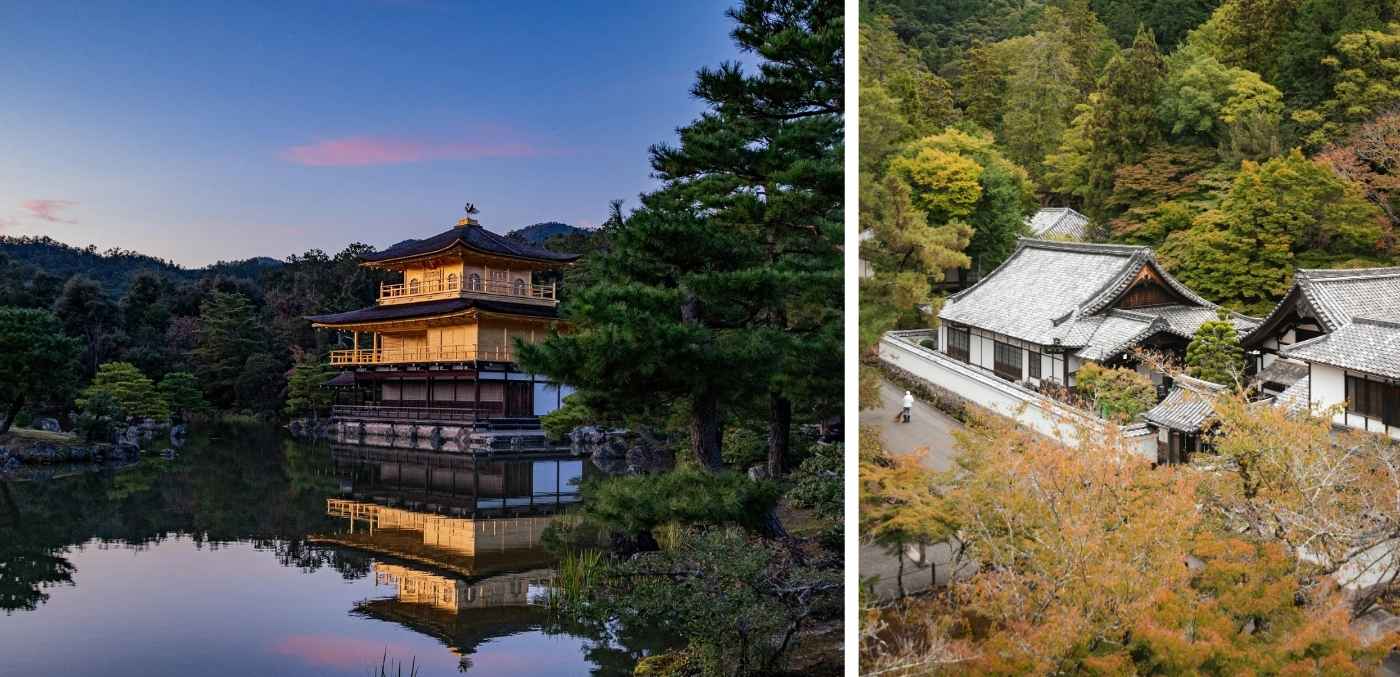
Osaka
Youthful, contemporary and entirely focused on food, Osaka is colloquially known as ‘Japan’s kitchen’ for its history as a culinary and trade hub. Eating while walking on the street simply isn’t done in Japan, but the tables turn in Osaka. Here, the culture is based upon notions of kuidaore – “eat until you drop”. Explore the chaotic street food scene in the Dōtonbori district, where neon lights, bars, clubs and restaurants crowd the canal. Alternatively, shop for produce at Kuromon Ichiba market, or dine at one of the 87 Michelin-starred venues throughout the city, three of which are three-star: Taian, Hajime and Kashiwaya Osaka Senriyama.
Signature experiences
Sites such as Shittenoji, Sumiyoshi Taisha and Umeda Sky Building are the usual suspects on tours of Japan’s third-largest city, but if you’re ready for retail therapy try the luxury boutiques along Shinsaibashi-Suji. The best places to visit in Japan have a healthy blend of food, culture and entertainment, and Osaka is no exception. Try a samurai heritage tour, stroll the streets of Nakazakicho to see pre-war machiya architecture, hike in Hoshida Park, or peruse the backstreets of Tengachaya where visitors can savour Osaka-style oden at the izakayas.
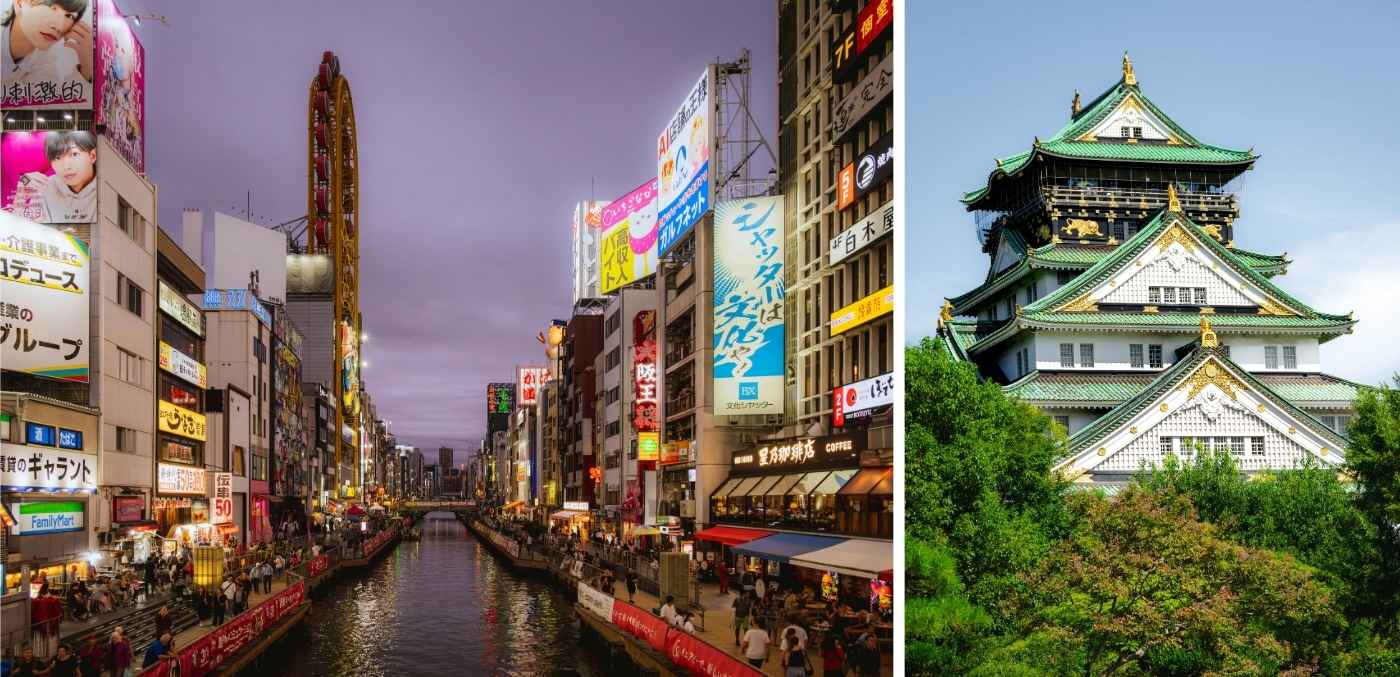
Fukuoka
Found on the northern coast of Kyushu, Fukuoka is a fast-growing city that preserves traditional crafts like Hakata weaving, dyeing and doll-making. Nestled between mountains and the sea in western Japan, it is closer to Seoul and Shanghai than Tokyo. Once overlooked by Western tourists, Fukuoka is gaining attention as Japan promotes travel beyond the Golden Triangle. The city combines heritage, cuisine, street life, and natural beauty, reflecting its history as both a merchant and samurai centre.
Signature experiences
Hakata in the east and Fukuoka in the west were once separate towns but now form one city, separated by Nakasu Island. Explore Hakata’s Old Town with a local guide, visiting historical sites such as Kushida Shinto Shrine and the 13th-century Jotenji Temple. Don’t miss Fukuoka’s famous yatai, small pop-up food stalls along the Naka River that plate-up local cuisine in a relaxed atmosphere. Maizuru Park, home to the Fukuoka Castle ruins, reflects the city’s samurai history. Sip cocktails at the science-themed Yorozu tea salon in Akasaka, close to the cherry blossom-lined Ohori Park and the Fukuoka Art Museum.
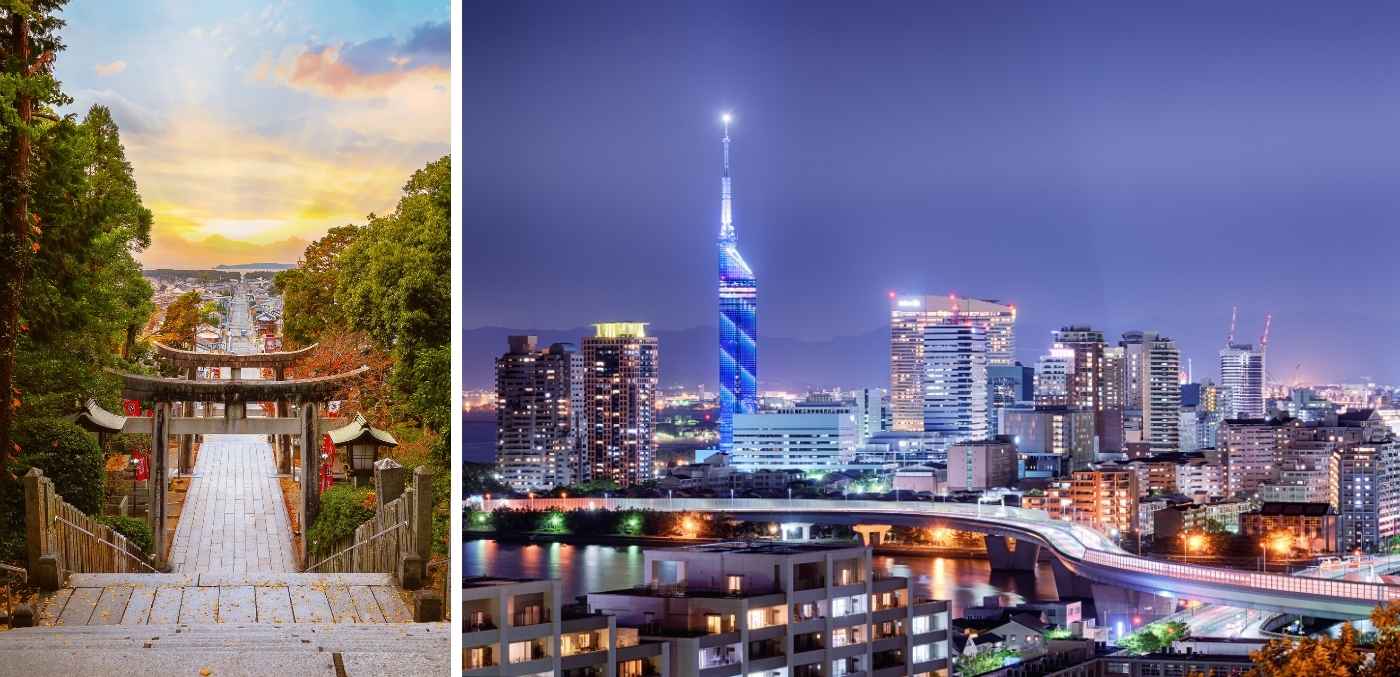
Hiroshima
This quiet city in western Honshu is known across the world as the location of the world’s first atomic bombing in 1945. Yet today, this calm city stands as a symbol of peace and resilience, the ruins of the tragic events preserved and displayed in a memorial. Its top attractions include the moving Hiroshima Peace Memorial Park, the Atomic Bomb Dome and the majestic Itsukushima Shrine on nearby Miyajima Island. For a more upmarket experience, visitors can enjoy fine kaiseki dining with locally sourced oysters and wagyu, stay in luxury ryokan with private onsen overlooking the Seto Inland Sea, or take a private yacht cruise around the picturesque nearby islands.
Day trips
Miyajima: Journey to Miyajima and stay at the renowned Kurayado Iroha ryokan, a five-star property located a short walk from the isle’s iconic Itsukushima Shrine. Guests enjoy private open-air onsen baths, meticulously prepared kaiseki cuisine, and minimalist interiors that reflect 1960s-era design sensibilities.
Matusyama: Just a 70-minute ferry ride from Hiroshima, Matsuyama on Shikoku Island is a charming and historic city known for its relaxed pace and walkable streets. It’s most famous for Dōgo Onsen, one of Japan’s oldest hot springs, which is said to have inspired Spirited Away. The elegant Dōgo Onsen Honkan, a public bathhouse with over 3,000 years of history, offers healing waters and was designated a National Important Cultural Property in 1994. Nearby, Matsuyama Castle towers over the city from a hilltop surrounded by cherry blossoms, offering panoramic views and a scenic chairlift ride to its courtyard.
Signature selects: Iyo Shokudo Shichifukujin on Dogoyunomachi plate up local cuisine in an upmarket and traditional setting. Expect sashimi, sea bream and other marine delicacies.
Ozu: South of Matsuyama, Ōzu offers a glimpse into Japan’s merchant past, once prosperous from wax, silk, and timber trade during the Edo and Meiji periods. Today, it draws visitors with its well-preserved townscape and the beautifully reconstructed Ōzu Castle, which dates back more than 400 years. Unique to Ōzu is the chance to book Japan’s first immersive castle stay experience, where guests can sleep like feudal lords in the historic keep
Signature Selects: Nipponia Hotel Ozu Castle Town is a deconstructed accommodation concept that provides guests with luxurious rooms and apartments set within restored heritage buildings throughout Ozu Old Town. Nipponia hosts Restaurant Le Un, which plates up French-Japanese fusion menus alongside Ozu Castle views.

Okinawa
Japan’s southernmost prefecture is a tropical island chain located between Kyushu and Taiwan, known for its warm climate, turquoise waters and distinct Ryukyuan culture. Visitors are drawn to its stunning white-sand beaches, world-class diving and snorkelling, historic castles, and relaxed island lifestyle. For luxury travellers, Okinawa offers exclusive experiences such as private yacht charters around the Kerama Islands, bespoke diving excursions to untouched coral reefs, and stays in secluded five-star villas with personal chefs and infinity pools overlooking the East China Sea
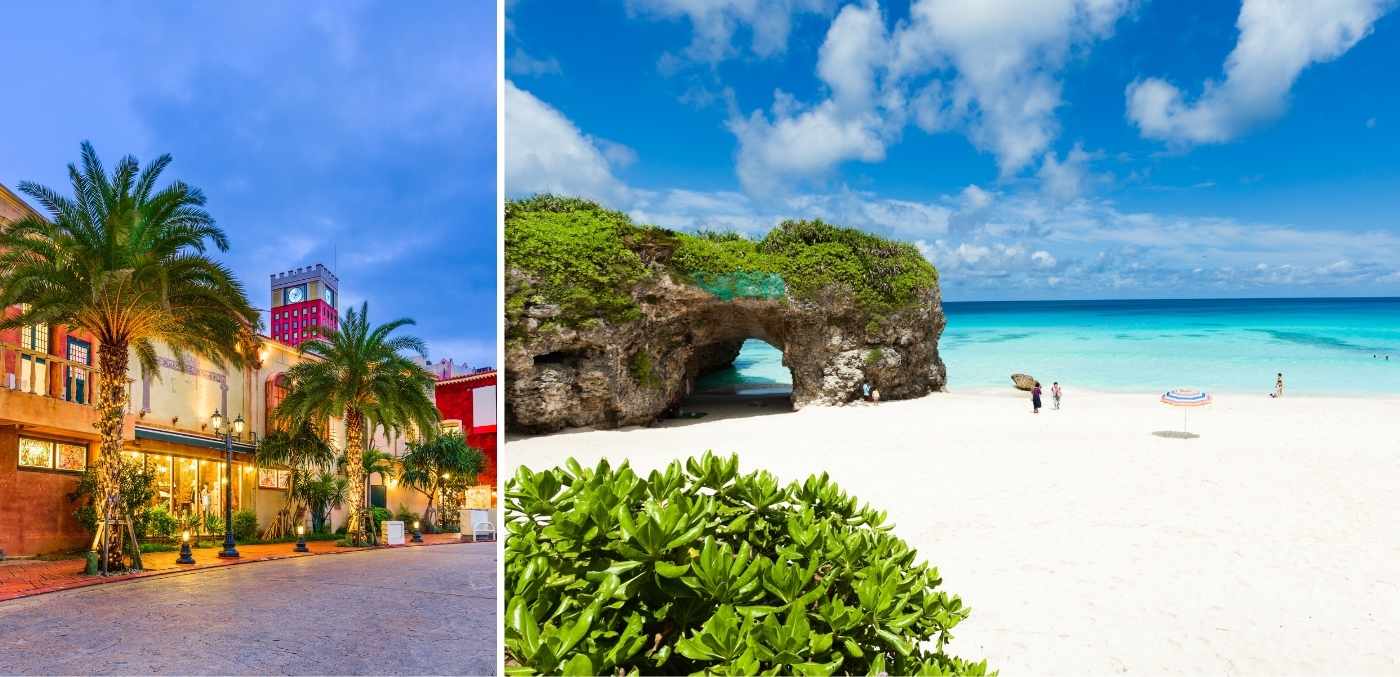
Skiing and snow sports
It may not be the first place that springs to mind when planning a winter holiday, but Japan has alpine resorts and snow-covered peaks that rival even Aspen, Méribel or St. Moritz. Dry, fluffy and light, Japan’s slopes are blanketed in powdery snow that is ideal for skiing or snowboarding. The best places to visit in Japan for snow sports include:
Niseko, Hokkaido
English-friendly with a buzzing après-ski scene, Niseko has off-piste terrain, backcountry tours and four interconnected resorts to choose from: Grand Hirafu, Hanazono, Niseko Village, Annupuri
Hakuba Valley, Nagano
Accessible from Tokyo via shinkansen with a great mix of runs and terrain parks, Hakuba Valley hosted the 1998 Winter Olympics and is now home to10 ski resorts including Happo-One, Tsugaike Kogen and Cortina.
Furano, Hokkaido
Quieter than Niseko, Furano offers top-quality powder, family-friendly slopes, well-groomed runs for beginners and intermediates, and a more authentic local culture and food scene.
Nozawa Onsen, Nagano
Nozawa Onsen is a historic hot spring village in Nagano offering excellent skiing, diverse terrain, and a rich blend of tradition and culture.
Rusutsu, Hokkaido
Rusutsu offers deep powder, tree runs and fewer crowds than Niseko, with three connected mountains ideal for off-piste skiing and a family-friendly atmosphere complete with amusement-style facilities.
Myoko Kogen, Niigata
Myoko Kogen offers deep powder, long runs, and multiple resorts in a less commercialised setting, combining excellent value with strong local character and growing appeal among tourists.
Zao Onsen, Yamagata
Zao Onsen in Yamagata is known for its unique “snow monsters”, scenic long runs, and historic hot springs, making it ideal for both skiing and relaxation with plenty of photographic appeal.
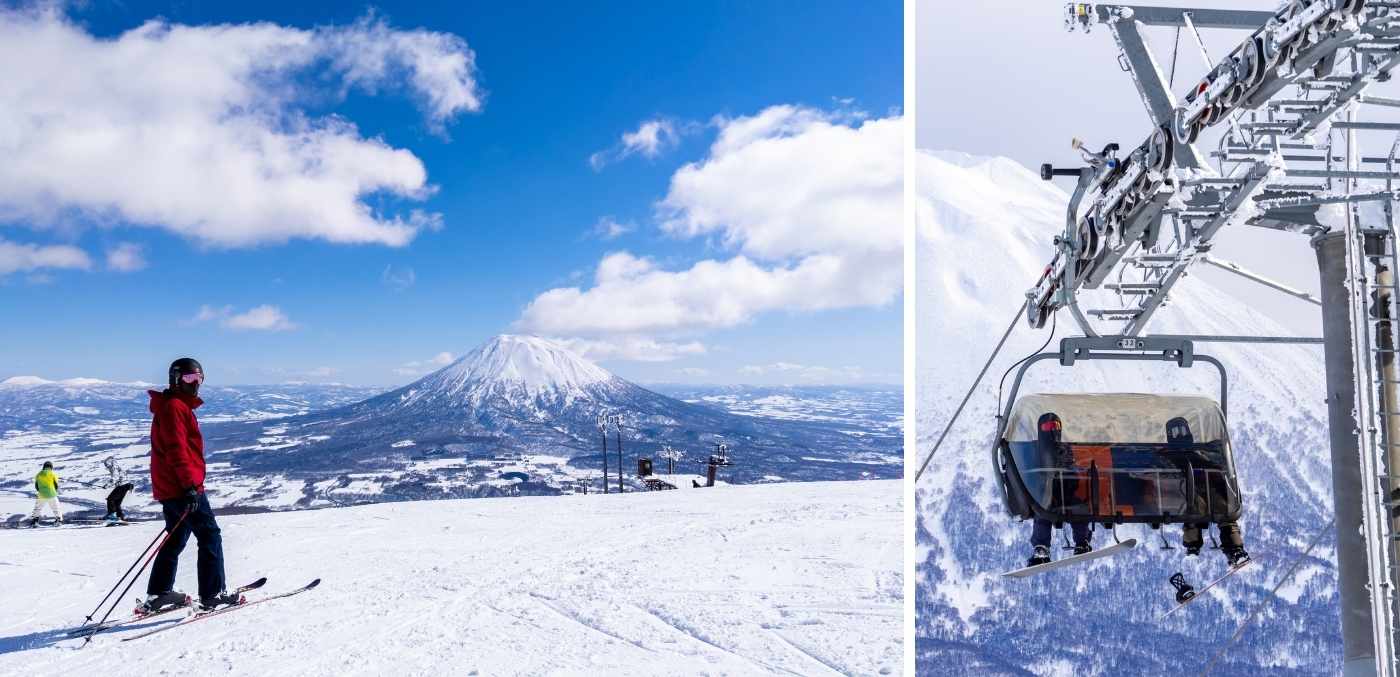
A beginner’s guide to Japanese cuisine
While Japan is known the world over for geisha traditions, samurai history, shrines, temples and the neon lights of Tokyo, the best places to visit in Japan are those with a thriving culinary scene.
Japanese food streets and markets
- Yatai Stalls, Fukuoka
- Tsukiji Market, Tokyo
- Monjayaki Street, Tokyo
- Nishiki Market, Kyoto
- Ramen Alley, Sapporo
- Omicho Market, Kanazawa
- Kuromon Ichiba Market, Osaka
- Ameya, Omoide and Harmonica Yokochōs, Tokyo
- Dotonbori, Osaka
- Tanga Market, Kyushu

Essential Japanese dishes
- Sushi – Hand-pressed or rolled sushi with fresh fish or toppings.
- Ramen – Noodles in rich broth with pork, egg, seaweed, and vegetables.
- Udon – Thick wheat noodles served hot or cold with tempura, tofu, or vegetables.
- Soba – Buckwheat noodles in soy broth, topped with vegetables or meat.
- Yakitori – Grilled chicken skewers with salt or sweet soy glaze.
- Kaisendon – Rice bowl topped with fresh sashimi.
- Yakiniku – Table-grilled slices of meat and vegetables.
- Okonomiyaki – Savoury pancake with seafood or pork, topped with sauce and mayo.
- Gyoza – Pan-fried dumplings with pork, cabbage, and garlic.
- Tonkatsu – Breaded, deep-fried pork cutlet, often served with rice and curry.
- Tempura – Lightly battered and fried seafood or vegetables.
- Takoyaki – Octopus-filled dough balls topped with sauce and bonito flakes.
- Tako-tamago – Baby octopus cooked in sweet soy sauce with a quail egg inside.
- Onigiri – Rice balls filled with salmon, pickled plum, or tuna mayo.
- Chawanmushi – Savoury egg custard with seafood or chicken.
- Japanese Curry – Mild, thick curry served with rice and meat.
- Tamagoyaki – Rolled omelette with vegetables and pickled ginger.
- Satsuma-age – Deep-fried fish cakes with sake and brown sugar.
- Uni – Sea urchin roe served raw or on sushi rice.
- Natto – Fermented soybeans with a sticky texture and strong flavour.
- Mochi – Pounded sticky rice cake, grilled or sweetened.
- Daifuku – Soft mochi stuffed with red bean paste or fruit.
- Taiyaki – Fish-shaped pastry filled with sweet custard or red bean.
- Matcha – Green tea lattes, ice cream, cakes or jelly.
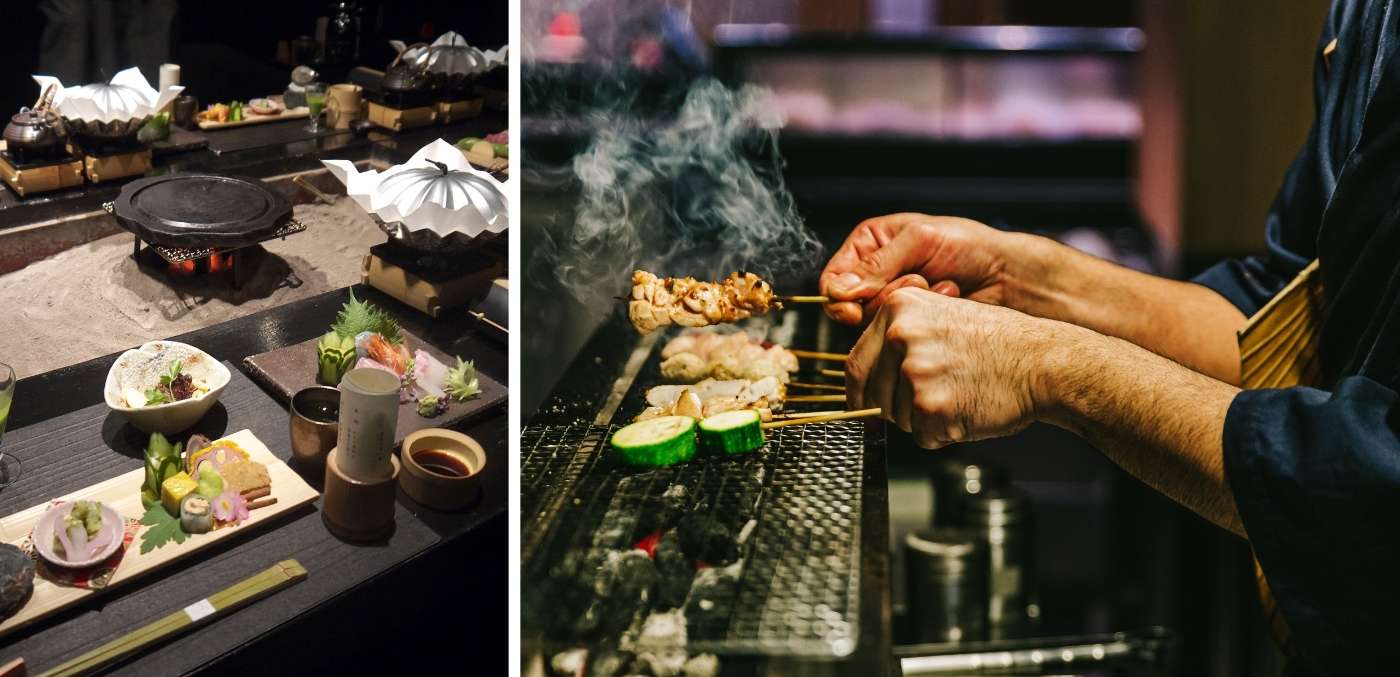
Learn more about Japan
- Best spas in Japan
- Japanese Onsen 101: a visitor’s guide
- Live like a 17th-century Japanese ruler with a stay at Ozu Castle
- A visitor’s guide to Kanazawa
- What to expect at a Japanese tea ceremony
This article is a Signature Luxury Travel & Style digital exclusive. Be the first to see more exclusive online content by subscribing to the enewsletter below.






